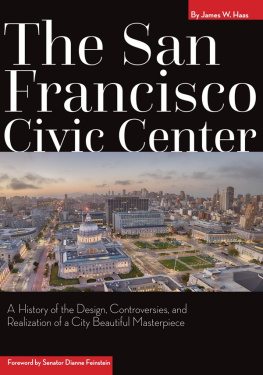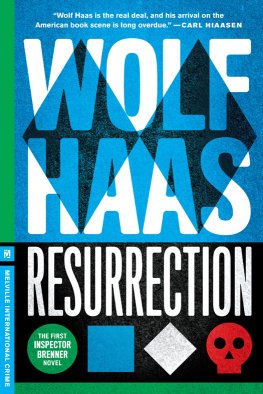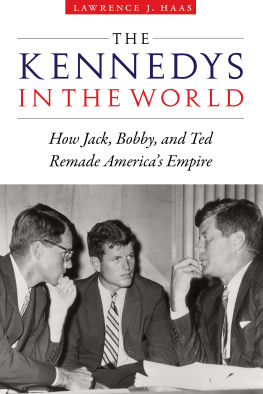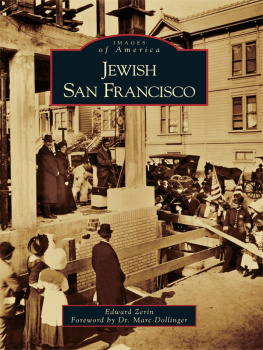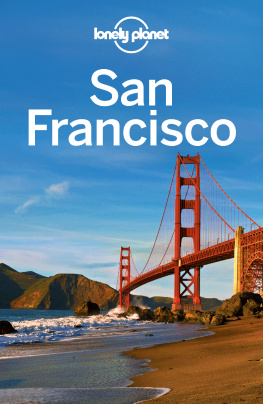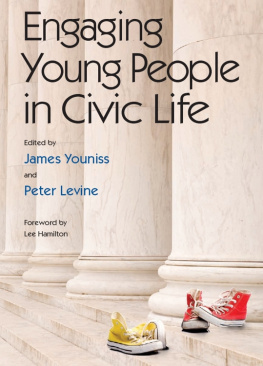University of Nevada Press | Reno, Nevada 89557 USA
www.unpress.nevada.edu
Copyright 2019 by University of Nevada Press
All rights reserved
Cover photograph by John W. Bare @JBinSF
Cover design by Matt Strelecki
LIBRARY OF CONGRESS CATALOGING-IN-PUBLICATION DATA
Names: Haas, James W., author. | Feinstein, Dianne, 1933 writer of foreword.
Title: The San Francisco Civic Center : a history of the design, controversies, and realization of a City Beautiful masterpiece / James W. Haas ; foreword by Dianne Feinstein.
Description: Reno ; Las Vegas : University of Nevada Press, [2019]. | Includes bibliographical references.
Identifiers: LCCN 2018041290 (print) | LCCN 2018047400 (ebook) | ISBN 9781948908146 (ebook) | ISBN 9781948908153 (cloth : alk. paper)
Subjects: LCSH: Civic Center (San Francisco, Calif.)History. | Civic centersCaliforniaSan FranciscoHistory. | Urban beautificationCaliforniaSan FranciscoHistory. | Civic centersUnited StatesHistory.
Classification: LCC F869.S36 (ebook) | LCC F869.S36 C594 2019 (print) | DDC 979.4/61dc23
LC record available at https://lccn.loc.gov/2018041290
Manufactured in the United States of America
FOREWORD
by Senator Dianne Feinstein
From its very beginning, San Franciscos Civic Center has been a vibrant and bustling urban hub that has required shrewd leadership, dedication, and vision to maintain. Although its revitalization has presented challenges over the years, one thing is clear to San Franciscans and visitors alike: Our citys Civic Center is a unique and beautiful treasure that must be preserved, enhanced, and celebrated. In The San Francisco Civic Center: A History of the Design, Controversies, and Realization of a City Beautiful Masterpiece, Jim Haas explores the areas fascinating history, major challenges to improvement projects over the years, and the importance of continued efforts to ensure its completed revitalization.
Ever since I first met Jim Haas during my earliest days on the San Francisco Board of Supervisors, he has demonstrated a consistent and admirable commitment to the well-being of our city. While his advocacy and leadership over the years has proven essential to a number of projects and issues, Jim will long be remembered for his thirty-year commitment to the completion and improvement of the citys Civic Center.
In The San Francisco Civic Center, Jim takes his record of service to the city to a higher level by bringing to light the unique history of the Civic Center. By doing so, he helps us not only to understand how the Civic Center came to be, but also to grasp its significance and central place in San Franciscos past, present, and future.
This book recounts the story of how Mayor James Rolphs groundbreaking leadership in the first quarter of the twentieth century enabled the Civic Center to become a reality. By demonstrating the influence of the City Beautiful movement on San Franciscos early planning, this book clarifies major pieces of San Francisco architectural and civic history, including the singular role of John Galen Howard, the original designer of the Civic Center, and of Arthur Brown Jr., the architect of City Hall, the War Memorial buildings and the Federal Office Building, as well as the numerous other important histories attached to the Civic Centers origins. In the century that has followed Mayor Rolphs initial efforts to build the Civic Center, there has been no shortage of disputes and controversies surrounding the sites development and upkeep: from lack of funding and bureaucratic neglect, to the inevitable evolution in architectural taste and civic priorities.
I began my career as mayor at a tumultuous timejust after the assassination of my predecessor, George Moscone. It took time to stabilize the city and address its numerous needs. With Jims help, I realized that the Civic Center was also in need of attention, and devoted my last three years in office in developing a plan and program to complete the Civic Center with a new main public library and a court house as well as converting the old main library into a home for the world-class Asian Art Museum. Although it gives me great pride to see that all those important buildings have been completed, efforts are still ongoing to make the Civic Center a useful and welcoming public space for all San Franciscans.
The beautification of cities has never been a frill. The quality and condition of a citys municipal structures and public spaces are core elements in creating community. As this important book demonstrates, San Franciscos Civic Centerdesigned according to the progressive reform ideas from the City Beautiful movement that sought to inspire community engagement through conscientious urban planningwas built around this very goal.
Before his passing, the late mayor Edwin Lee launched a major initiative to improve the Civic Center public realm. Investment in the care of our public spaces is essential to the continued vitality of our beautiful city. Although it will only be possible through meticulous planning, hard work, and the help of many passionate people, I have faith that we will someday see the completed revitalization of San Franciscos Civic Center. This book will help people understand and appreciate what a magnificent treasure we in San Francisco have with our Civic Center and why we must continue to work to preserve and enhance it.
I urge everyone to read it.
Senator Dianne Feinstein
PREFACE
My involvement with the development of the San Francisco Civic Center began in fall 1984, when Marjorie Stern, a great advocate for the public library, asked me to join her campaign to build a new main library on Marshall Square. The old main library had numerous problems, and a major effort had begun to encourage the city to back the construction of a new library building in the Civic Center area. The project would require a tremendous amount of money, and Dianne Feinstein, who was then mayor, was reluctant at first to get behind the effort. At the time, all of the Civic Center buildings and plaza had suffered from decades of neglect and were badly in need of attention. To help overcome Mayor Feinsteins reluctance to endorse the library project, I encouraged her by letter to view the library as part of a larger effort toward making major improvements to all of the Civic Center. Eventually, as she and her staff studied the situation, this tactic would prove effective, and in December of 1987, Mayor Feinstein announced an area development plan for the Civic Center, a plan which included a new library.
Once Feinstein offered her support for a new libraryfunding for which the voters initially approved in 1988 and which would open in 1996I went on to advocate for improving the rest of the Civic Center through the implementation of Feinsteins area plan. As part of those efforts, I began to research the Civic Centers background because I often needed to write articles and make presentations to support improvements. However, during those research efforts, I quickly discovered that public information about the Civic Center and City Hall was limited, antiquated, and frequently inaccurate. As a result, I needed to look for more useful sources. The late Joan E. Drapers PhD thesis, The San Francisco Civic Center: Architecture, Planning, and Politics, is the most comprehensive, and perhaps the only, discussion extant of civic centers in general and of the San Francisco Civic Center in particular. Tilmans work was a great source of information on Browns long life, and also describes these buildings and their development in great detail.
As useful as both of these resources were, I found that the only way I would be able to construct a whole story of the San Francisco Civic Center that included local political developments was to scour primary sources. The electronic age has made this task much easier than before, with digitized documents including, most importantly, newspapers. For example, James Rolph, who was elected mayor of San Francisco in 1911 and who would later become governor of California, played a leading role in the Civic Center story. However, no one has written about Rolphs life or work in a way that covers the time period of his first election or his work during the Panama-Pacific International Expositioncritical moments in the Civic Centers history. Thus, I had to put together that story from primary material. In addition, much of the existing information played down or even ignored the role of the prominent architect and planner John Galen Howard as the original planner. Since Howard was the person largely responsible for the design of the Civic Center complex, I have taken pains to highlight his unique contribution.

